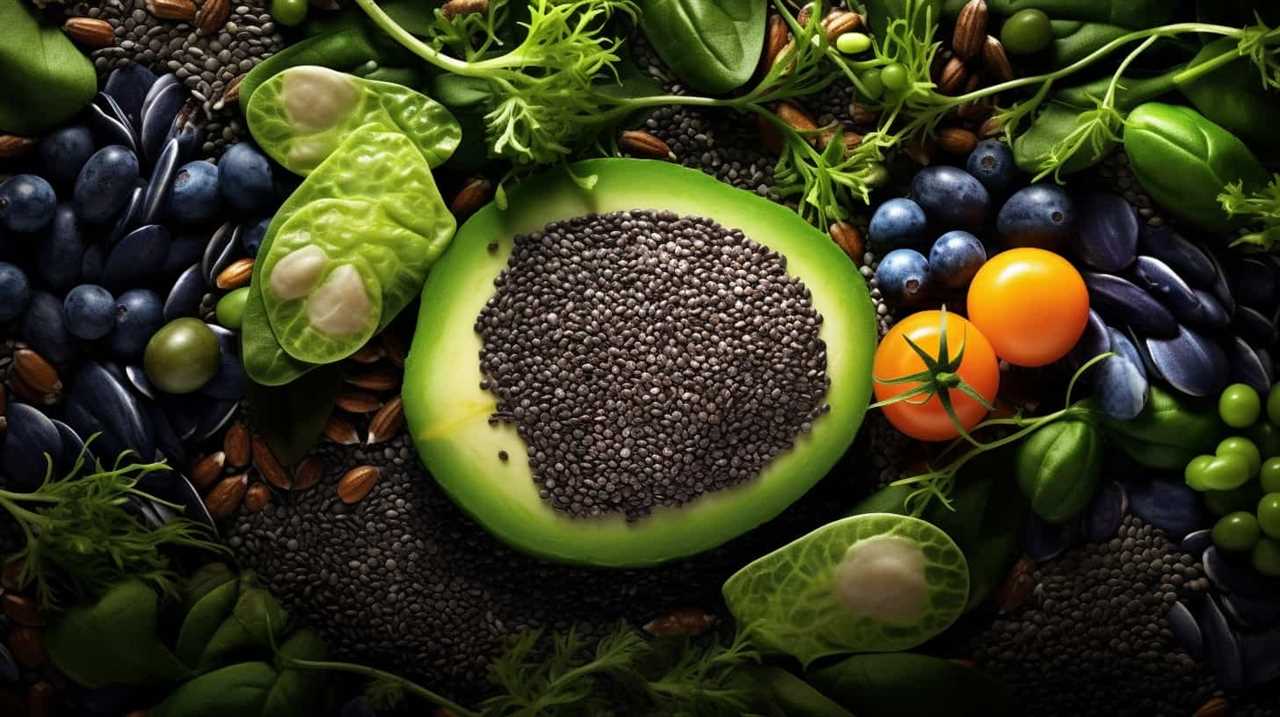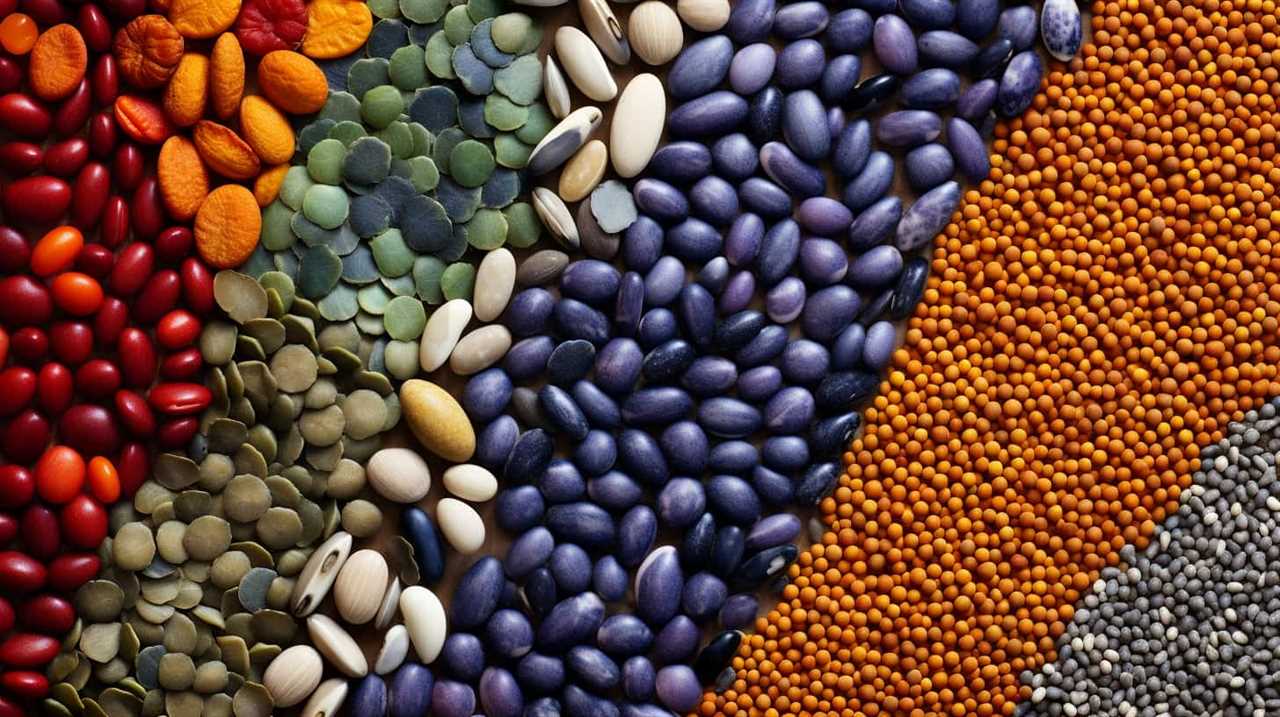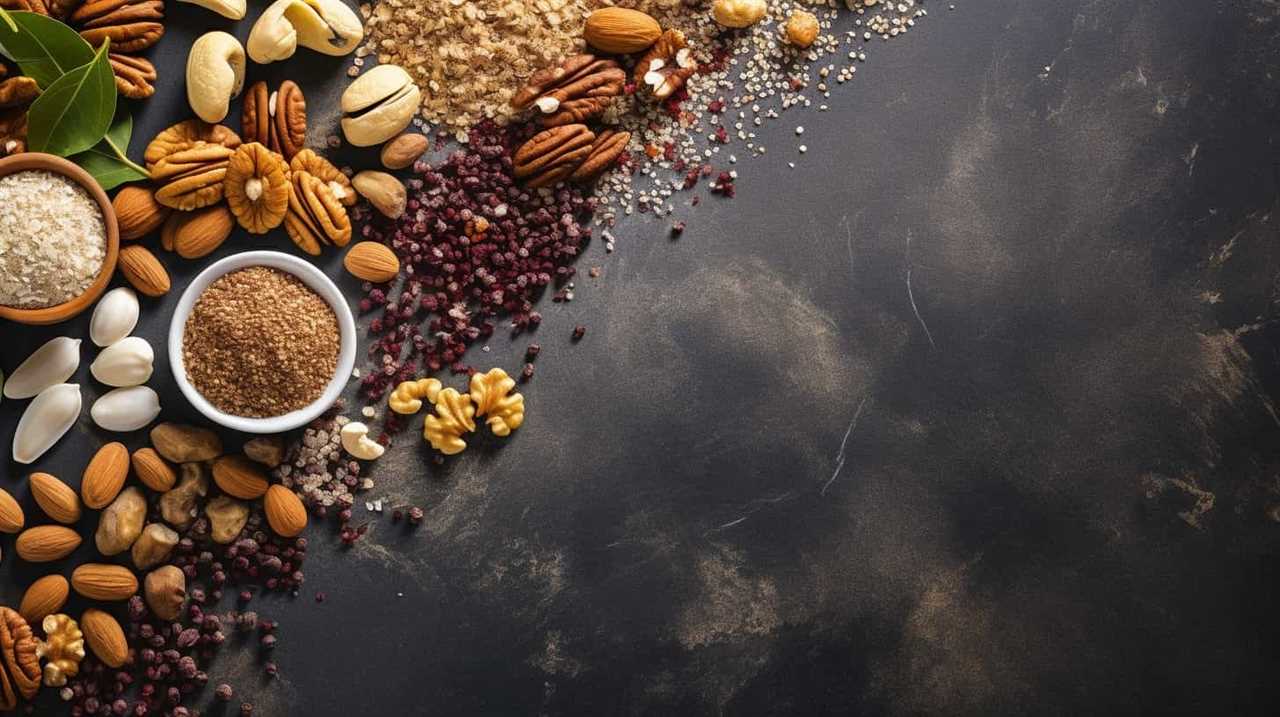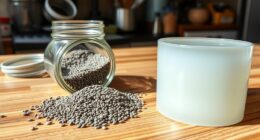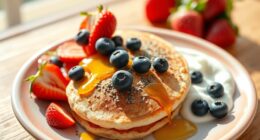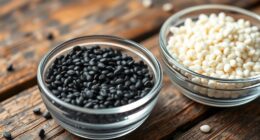Are you ready to take your gluten-free baking skills to the next level?
We’ve got three incredible ways to utilize seeds that will transform your recipes.
Think of seeds as the secret ingredients that add both flavor and texture to your favorite treats.
With chia seed gel as an egg substitute, chia seeds as a binding agent, and chia seed flour for gluten-free baking, you’ll be amazed at the results.
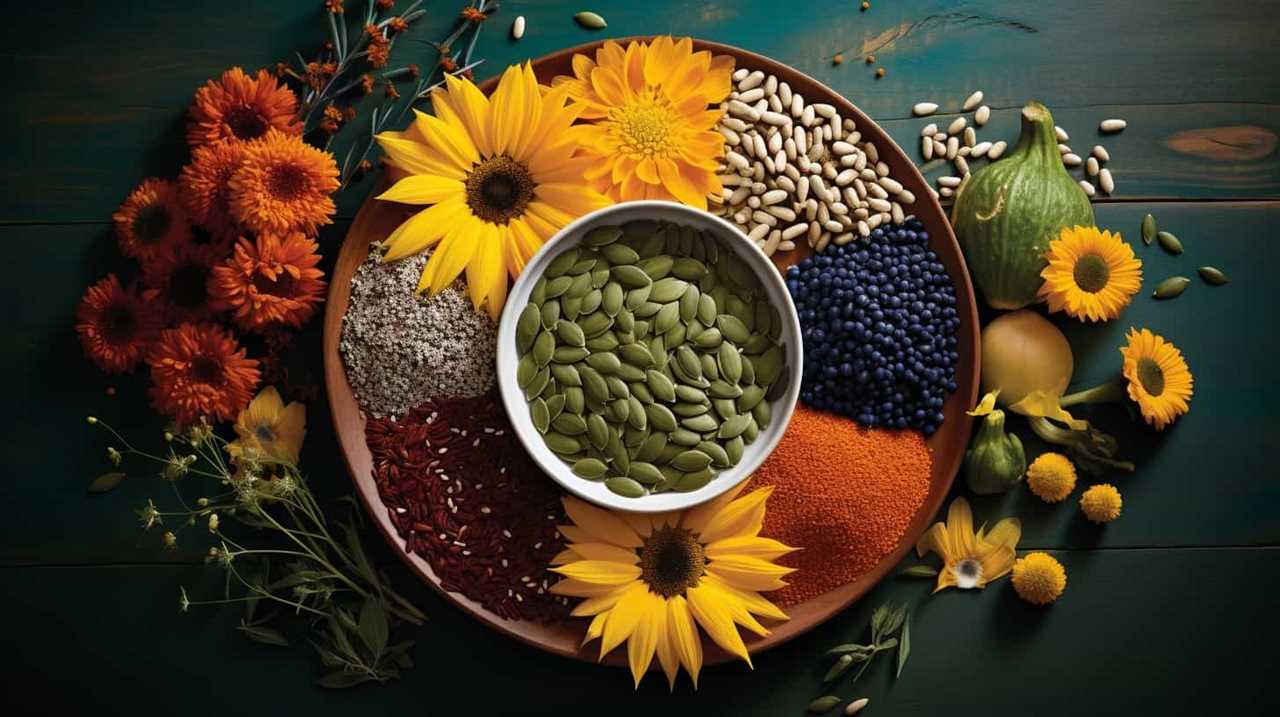
Get ready to serve up deliciousness that will leave everyone begging for seconds.
Key Takeaways
- Chia seed gel is a versatile ingredient in vegan baking that can mimic the binding properties of eggs and add moisture and a subtle nutty flavor to baked goods.
- Chia seeds can act as a binding agent in gluten-free baking, providing structure and helping to hold ingredients together.
- Chia seed flour is a nutritious addition to gluten-free recipes, offering fiber and omega-3 fatty acids, and providing a unique texture and nutty flavor to baked goods.
- Incorporating chia seeds in gluten-free baking enhances the taste and texture of treats while adding nutritional value, such as fiber and omega-3 fatty acids.
Chia Seed Gel as an Egg Substitute
In this article, we’ll explore the effectiveness of using chia seed gel as an egg substitute in gluten-free baking.
Chia seed gel is a popular ingredient in vegan baking recipes, as it provides a great alternative to eggs. When mixed with water, chia seeds form a gel-like consistency that can mimic the binding properties of eggs in baking.
This gel can be easily incorporated into a variety of gluten-free recipes, such as muffins, cookies, and cakes. Not only does chia seed gel act as a binder, but it also adds moisture and a subtle nutty flavor to your baked goods.

Additionally, chia seed gel can be used beyond baking and incorporated into smoothies and desserts to add a nutritional boost.
Chia Seeds as a Binding Agent
To continue our exploration of utilizing seeds in gluten-free baking, let’s discuss the role of chia seeds as a binding agent. Chia seeds are small, nutrient-dense powerhouses that are packed with fiber and omega-3 fatty acids. When combined with liquid, they form a gel-like substance that can be used as a substitute for eggs in baking.
Here are four reasons why chia seeds are a fantastic binding agent:
- Versatility: Chia seeds can be used in a variety of recipes, from breads and muffins to cookies and pancakes. They provide structure and help hold ingredients together, resulting in a moist and cohesive texture.
- Nutritional benefits: Chia seeds aren’t only great for binding, but they also offer numerous health benefits. They aid in digestion, thanks to their high fiber content, and can help regulate blood sugar levels.
- Easy to use: To create a chia seed gel, simply mix 1 tablespoon of chia seeds with 3 tablespoons of water and let it sit for 10 minutes until it thickens. This gel can then be used as an egg substitute in your gluten-free baking recipes.
- Chia seed pudding recipes: Chia seeds aren’t limited to baking; they’re also a key ingredient in chia seed pudding recipes. These delicious and nutritious puddings can be enjoyed as a healthy breakfast or dessert option.
Incorporating chia seeds as a binding agent in your gluten-free baking not only adds nutritional value but also helps create delicious and satisfying treats. So, why not give it a try and enjoy the benefits of chia seeds for digestion and overall well-being?
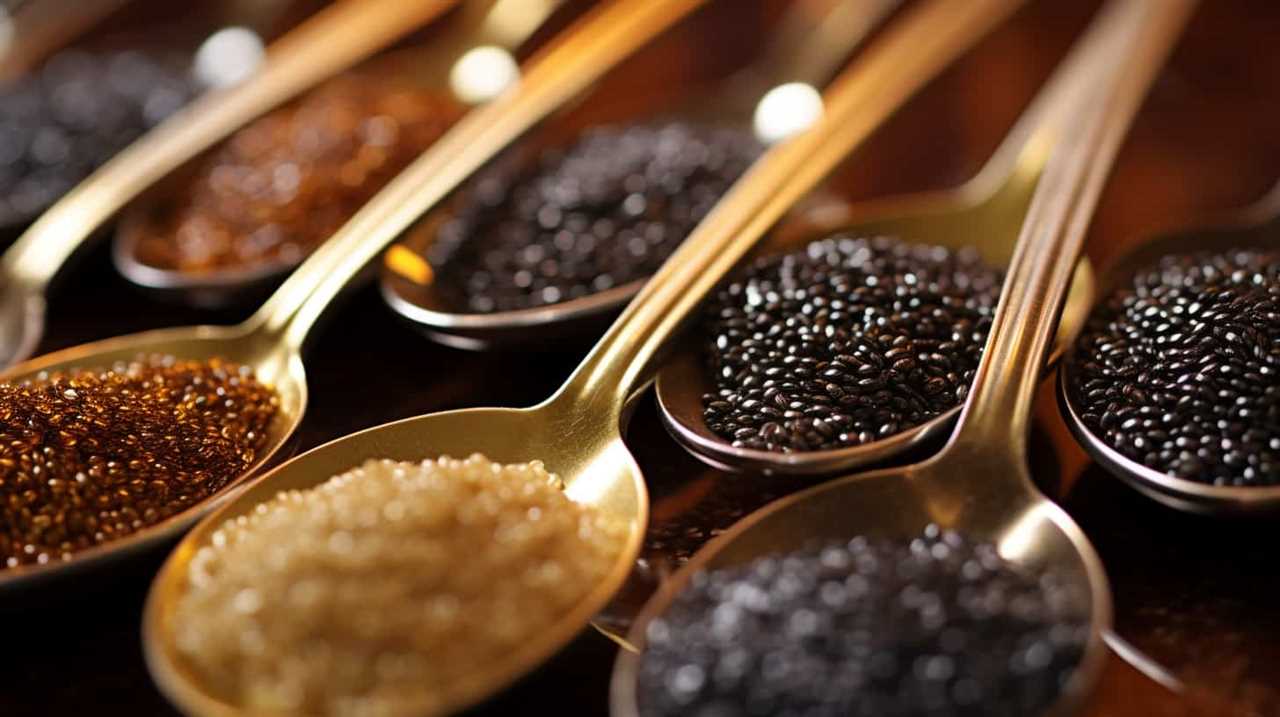
Chia Seed Flour for Gluten-Free Baking
Let’s dive into the benefits of utilizing chia seed flour in gluten-free baking. Chia seeds are a versatile ingredient that can be ground into a fine flour, adding a nutritious boost to your gluten-free recipes. Chia seed flour isn’t only a great source of fiber and omega-3 fatty acids, but it also provides a unique texture to baked goods.
One delicious way to use chia seed flour is by making chia seed pancakes. Simply substitute a portion of the regular flour in your pancake recipe with chia seed flour. This won’t only enhance the nutritional value of your pancakes but also give them a delightful nutty flavor.
Another popular option is to make chia seed pudding for breakfast. Mix chia seed flour with your choice of milk, sweetener, and flavorings such as vanilla or cocoa powder. Let it sit overnight in the refrigerator, and in the morning, you’ll have a creamy and nutritious pudding ready to enjoy.
Incorporating chia seed flour into your gluten-free baking not only adds nutritional benefits but also enhances the taste and texture of your creations. So go ahead and experiment with chia seed flour in your favorite recipes for a wholesome gluten-free option.

Frequently Asked Questions
Can I Use Chia Seeds in Other Gluten-Free Recipes Besides Baking?
Sure, we can definitely use chia seeds in other gluten-free recipes besides baking. Chia seeds can be added to savory dishes like salads, soups, and stir-fries to enhance both taste and nutrition. They are packed with health benefits, making them a versatile ingredient.
How Do I Store Chia Seed Gel and How Long Does It Last?
When it comes to storing chia seed gel, it’s important to keep it in an airtight container in the refrigerator. The shelf life of chia seed gel is typically around 5-7 days.
Can I Use Chia Seeds as a Binding Agent in Recipes That Are Not Gluten-Free?
Yes, you can use chia seeds as a binding agent in recipes that are not gluten-free. Chia seeds have many benefits, including being a great source of fiber and omega-3 fatty acids. They can be added to various recipes for added nutrition and texture.
Can I Substitute Chia Seed Flour for Regular Flour in All Baking Recipes?
Yes, you can substitute chia seed flour for regular flour in all baking recipes. Chia seeds are a great thickener in soups and sauces, and they offer numerous health benefits. They are versatile and can be used in various recipes.
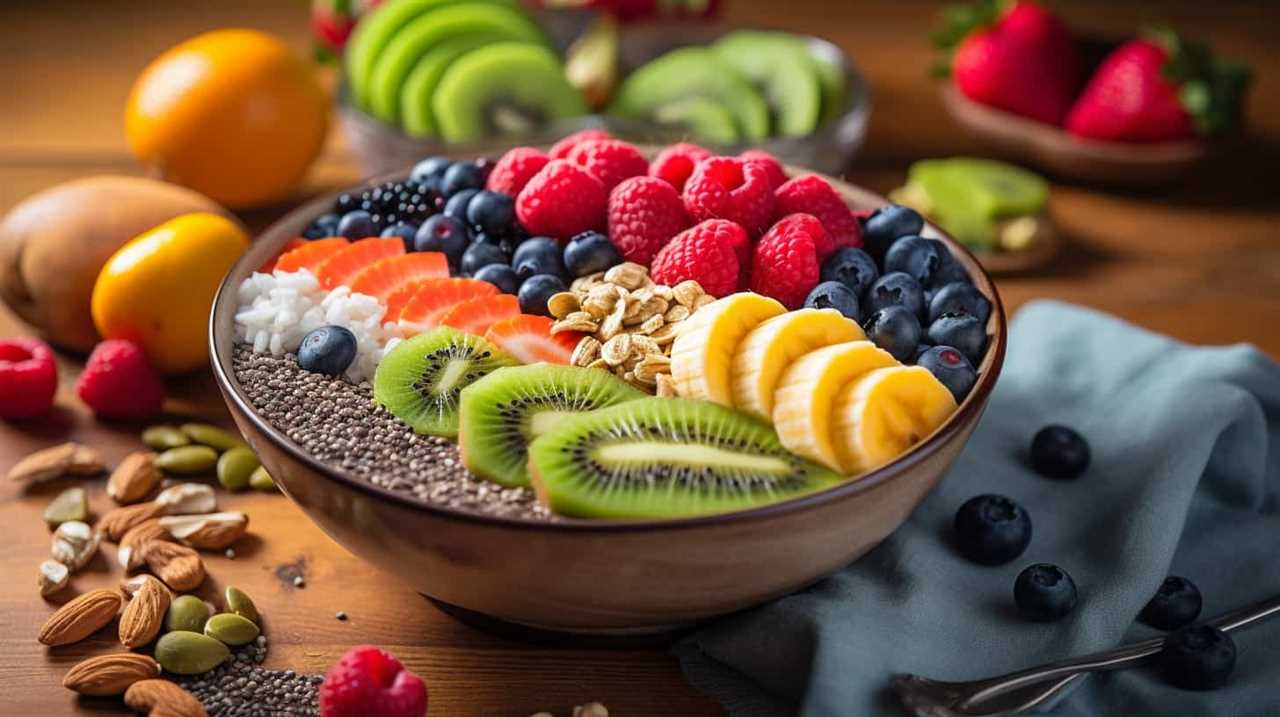
Are There Any Flavor Differences When Using Chia Seed Gel as an Egg Substitute in Baking?
When using chia seed gel as an egg substitute in baking, there may be slight flavor differences depending on the recipe. However, the benefits of using chia seeds in gluten-free baking, such as added nutrients and texture, outweigh any potential taste variations.
Conclusion
In conclusion, incorporating seeds into gluten-free baking can provide a variety of benefits. Chia seeds, in particular, can be used as an egg substitute, a binding agent, and even ground into flour for gluten-free recipes.
Interestingly, chia seeds contain 5 grams of fiber per tablespoon, which can contribute to a healthier digestive system.
By utilizing seeds in baking, individuals can enjoy delicious gluten-free treats while also reaping the nutritional advantages they offer.
